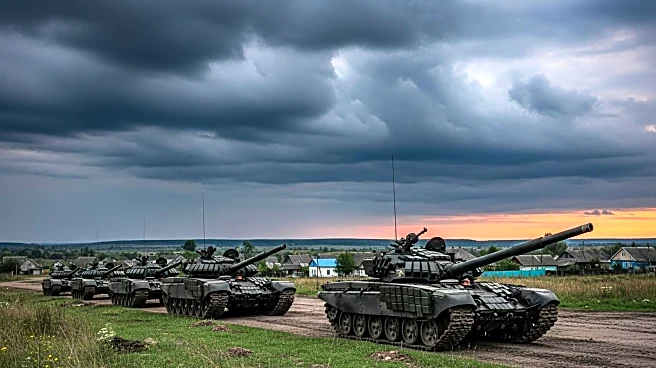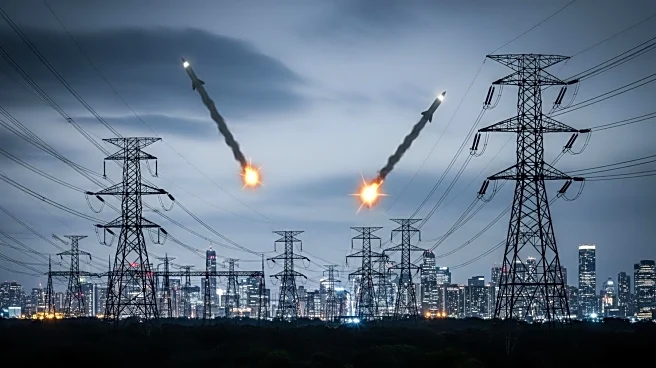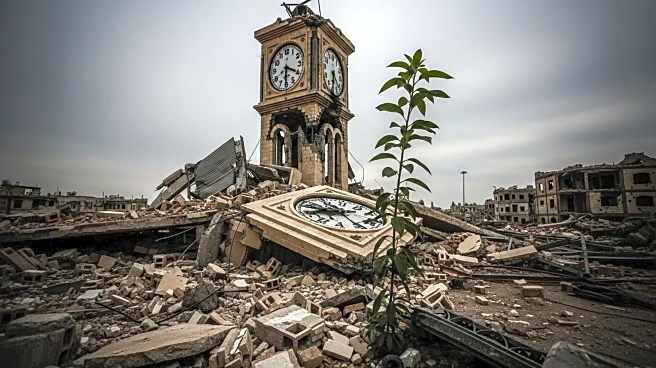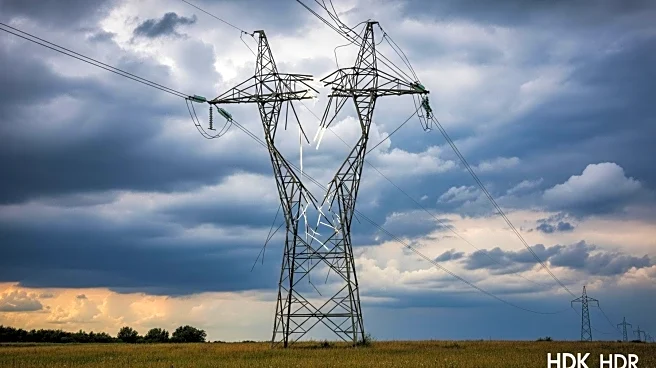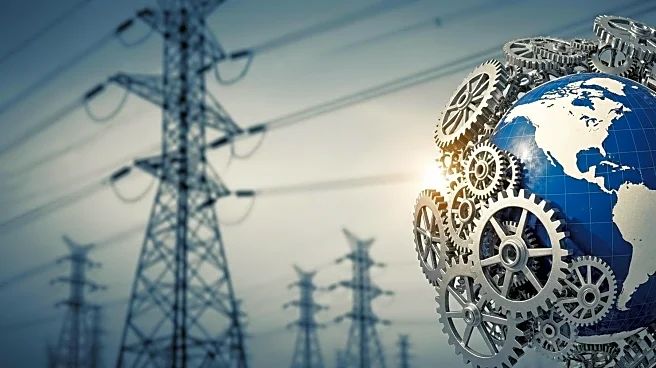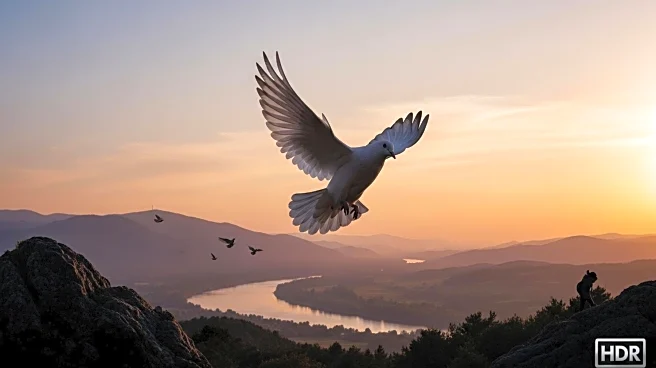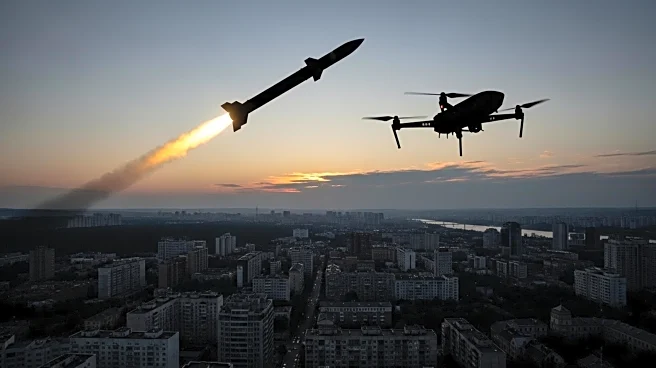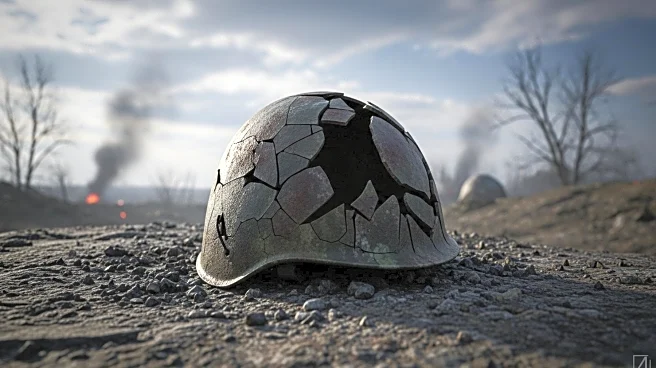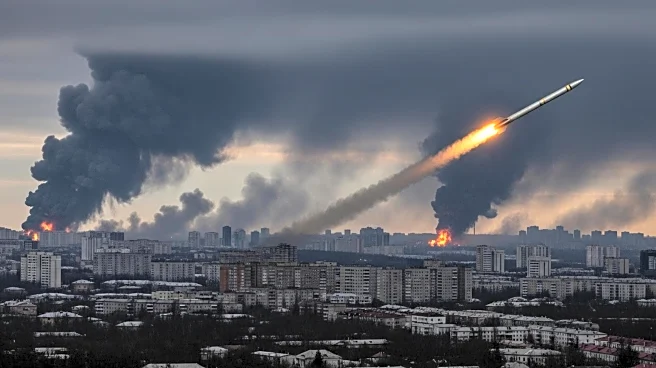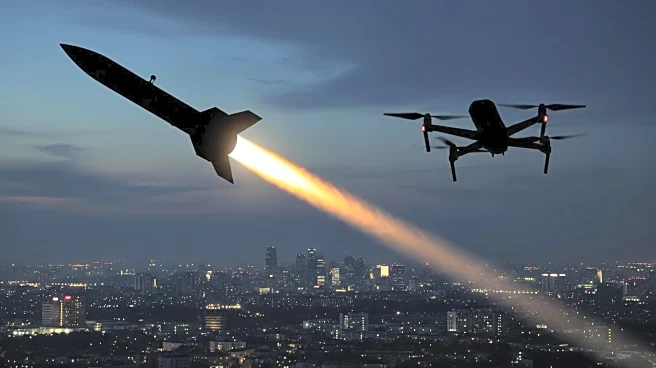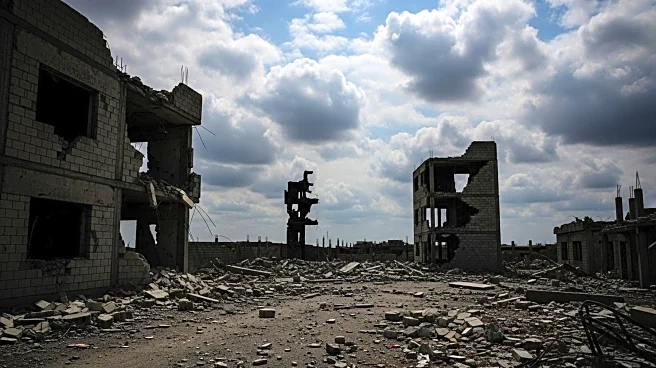What is the story about?
What's Happening?
Recent satellite images suggest that Russian soldiers have occupied the village of Verkhnya Krynytsya in the Zaporizhzhia region of Ukraine. This area, which has been under Russian control since the early stages of the full-scale invasion in February 2022, shows signs of military presence, including a well-used path leading to the childhood home of a BBC journalist. The village, once a peaceful community, has become a strategic location due to its proximity to the front lines. The occupation has led to significant changes in the village, with many residents fleeing and Russian troops reportedly moving into vacant homes. The Ukrainian 128th Detached Heavy Mechanised Brigade has confirmed the likelihood of Russian military personnel occupying these areas.
Why It's Important?
The occupation of Verkhnya Krynytsya by Russian forces highlights the ongoing territorial disputes and military strategies in the region. This development is significant as it underscores the challenges faced by local populations in conflict zones, where civilian areas are repurposed for military use. The presence of Russian troops in residential areas raises concerns about the safety and security of remaining civilians, as well as the potential for further escalation in the conflict. The situation also reflects broader geopolitical tensions, with Russia's actions in Ukraine drawing international scrutiny and impacting diplomatic relations.
What's Next?
As the conflict continues, the situation in Verkhnya Krynytsya and similar villages remains precarious. The Ukrainian military and international observers will likely continue to monitor these areas for further developments. The ongoing occupation may prompt additional military responses or diplomatic efforts to address the humanitarian and security challenges in the region. The international community may also increase pressure on Russia to withdraw its forces and engage in peace negotiations.
Beyond the Headlines
The transformation of Verkhnya Krynytsya from a peaceful village to a military zone illustrates the broader impact of war on civilian life and infrastructure. The destruction of the Kakhovka dam, which led to significant environmental and economic damage, is a reminder of the long-term consequences of military conflict. The fear and uncertainty experienced by residents highlight the human cost of war, as communities are disrupted and lives are irrevocably changed.
AI Generated Content
Do you find this article useful?
